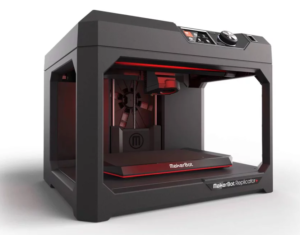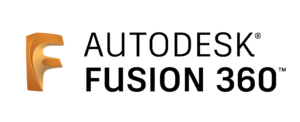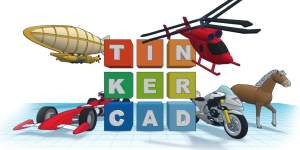What is 3D Printing?
3D Printing, or additive manufacturing, is the process by which three-dimensional objects are created from digital files.
Additive manufacturing is the process of laying down successive layers of material until the object is complete. This process allows for a very stable, lightweight object to be created while limiting excessive use of resources thus lowering production costs.
While many commercial 3D printers use a corn-based plastic filament, other materials can be used depending on the application, such as metals, concrete, other plastics, and perhaps one day, human tissue.
Getting Started with 3D Design
Computer-Aided Design (CAD) software is widely available to users for the purpose of 3D design and modeling. These programs enable users to create digital objects in either two-dimensional or three-dimensional space. Most CAD tools allow users to create, modify, analyze or optimize digital designs to suit the overall purpose of the object. To read more about the different types of 3D modeling, click here.
Tinkercad
Tinkercad is a free, web browser-based computer-aided design (CAD) tool. It allows users to use simple drag-and drop technology to create a 3D print file (.stl) which can then be printed on most commercial 3D printers. Tinkercad can be utilized for any curricular subject, the only limit is the creativity of the user. Click here to visit the Tinkercad website and get started!
Fusion 360
Also from Autodesk, Fusion 360 is a fully-integrated computer-aided design (CAD),  computer-aided manufacturing (CAM), and computer-aided engineering (CAE) platform. While Tinkercad is ideal for users with little modeling experience, Fusion 360 is professional-grade software that can take your designs to the next level. Unlike Tinkercad, Fusion 360 has a steep learning curve and its full functionality is only available with a paid license. However, if you’re interested in more sophisticated 3D design with more control over your model, this program may be worth checking out. Click here to learn more about the features of Fusion 360.
computer-aided manufacturing (CAM), and computer-aided engineering (CAE) platform. While Tinkercad is ideal for users with little modeling experience, Fusion 360 is professional-grade software that can take your designs to the next level. Unlike Tinkercad, Fusion 360 has a steep learning curve and its full functionality is only available with a paid license. However, if you’re interested in more sophisticated 3D design with more control over your model, this program may be worth checking out. Click here to learn more about the features of Fusion 360.
If you’re looking to use Fusion 360 in the secondary classroom, this curriculum and activity guide produced by STEAM-3D Maker Lab intern Oliver Alexander might help! Learn to start using Fusion 360 to model replacement parts and explore the Ontario Grade 9 Mathematics curriculum with the help of Python programming:
For even more 3D printing resources, check out our Additional Making Resources page!
Curriculum Connections
Not sure where 3D printing fits into your educational program? Check our list of Ontario curriculum connections!
3D Printing in the Maker Lab
3D Printing in The “Real World”
Medical Industry:
- Bio-Printing
- Potential for use in tissue engineering and similar applications.
- Layers of living cells are deposited into a gel-based medium and slowly built up into a three-dimensional structure.
- Planning and Practice
- Prior to conducting major surgeries, surgeons can print anatomically correct versions of the patient’s organ.
- They can take these models and plan their best course of action to ensure best results for patients.
Aerospace and Aviation:
- Typically would utilize Fused Deposition Modeling (FDM) technology.
- An additive manufacturing technology.
- Involves laying down materials in layers.
- Allows for rapid prototyping and rapid manufacturing.
- NASA has been known to use this type of 3D technology.
- Designers can create digital files from Earth and send them up to the printer at the International Space Station.
- Printing on demand can revolutionize longer distance journeys in space.
- Changes the way supplies can be replaced.
- Could allow for creation of objects that historically could not be launched into space.
Related Resources:
3D Scanning & Subtractive Manufacturing
Introduction to 3D Scanning
3D scanning is a non-contact and non-destructive tool that captures the shape of physical objects using a line of laser light. These scanners allow users to collect an object’s exact dimensions and recreate it in a digital form that can then be manipulated or utilized.
Subtractive Manufacturing in the Maker Lab
Laura Dobos, one of our research assistants, has taken on the challenge of learning our newest piece of tech – our CNC machine (Carvey). Here’s what we think so far!
Advance Your Knowledge: Types of 3D Modeling
Parametric Modeling:
- Objects are built from a set of mathematical equations.
- Often based on “real world” project data and parameters.
- Use feature-based, solid and surface modeling tools to manipulate attributes of the system.
- Attributes are intertwined so when an adjustment is made, it affects all facets of the design.
Direct or Explicit Modeling:
- Uses a database of pre-existing geometric shapes and models.
- Objects are modified through pushing, pulling, or twisting (Boolean operations).
- Often much simpler for beginner users of CAD software.

